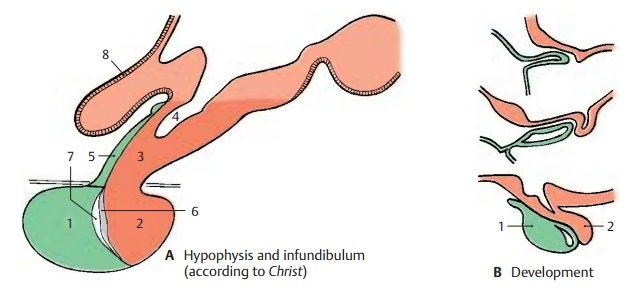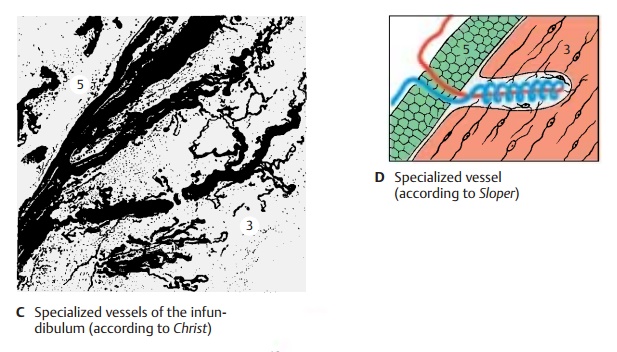Chapter: Human Nervous System and Sensory Organs : Diencephalon
Infundibulum
Infundibulum
The tuber cinereum tapers at its base to form the infundibulum (hypophysial stalk) (A3) and the infundibular recess (A4). The funnel-shaped descent of the infundibulum, where the contact between nervous and en-docrine systems is established, is also called the median eminence of the tuber. A thin tissue layer of the adenohypophysis reaches to the tuber cinereum and covers the anterior side of the infundibulum (infundibular part of theadenohypophysis) (A5); several islets of tissuecover also its back. Thus, we can distinguish a proximal part of the hypophysis bordering on its tuber cinereum (infundibulum and infundibular part of the adenohypophysis) and a distal part lying in the sella turcica (adenohypophysis with the intermediate part [A6, hypophysial cavity [A7], and neuro-hypophysis). The proximal contact surface is of special significance for the interconnec-tion of the nervous and endocrine systems. The outer glial fiber layer (A8), which seals off the rest of the brain surface, is absent here, and portal capillaries (C) enter from the adenohypophysis into the infun-dibulum. These are vascular loops with an afferent and an efferent limb, which takea convoluted and sometimes spiral course (D).


Related Topics